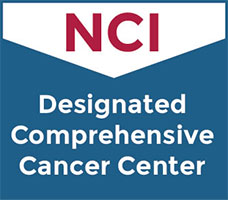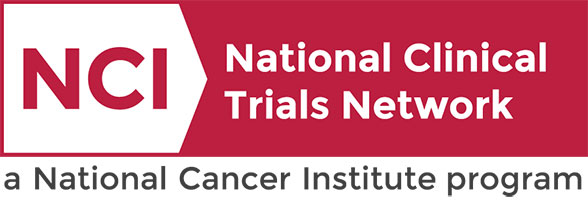Clinical Trials Search at Vanderbilt-Ingram Cancer Center
A Study to Compare Treatment with the Drug Selumetinib Alone versus Selumetinib and Vinblastine in Patients with Recurrent or Progressive Low-Grade Glioma
This phase III trial investigates the best dose of vinblastine in combination with selumetinib and the benefit of adding vinblastine to selumetinib compared to selumetinib alone in treating children and young adults with low-grade glioma (a common type of brain cancer) that has come back after prior treatment (recurrent) or does not respond to therapy (progressive). Selumetinib is a drug that works by blocking a protein that lets tumor cells grow without stopping. Vinblastine blocks cell growth by stopping cell division and may kill cancer cells. Giving selumetinib in combination with vinblastine may work better than selumetinib alone in treating recurrent or progressive low-grade glioma.
Not Available
III
Esbenshade, Adam
NCT04576117
COGACNS1931
Vincristine Pharmacokinetics in Infants
Pediatrics
Pediatrics
This pilot trial compares drug exposure levels using a new method for dosing vincristine in infants and young children compared to the standard dosing method based on body surface area (BSA) in older children. Vincristine is an anticancer drug used to a variety of childhood cancers. The doses anticancer drugs in children must be adjusted based on the size of the child because children vary significantly in size (height, weight, and BSA) and ability to metabolize drugs from infancy to adolescence. The dose of most anticancer drugs is adjusted to BSA, which is calculated from a patients weight and height. However, infants and young children have more severe side effects if the BSA is used to calculate their dose, so new dosing models have to be made to safely give anticancer drugs to the youngest patients. This new method uses a BSA-banded approach to determine the dose. Collecting blood samples before and after a dose of the drug will help researchers determine whether this new vincristine dosing method results in equivalent drug levels in the blood over time in infants and young children compared to older children.
Pediatrics
N/A
Borinstein, Scott
NCT05359237
COGPEPN22P1
Active Surveillance, Bleomycin, Etoposide, Carboplatin or Cisplatin in Treating Pediatric and Adult Patients with Germ Cell Tumors
Multiple Cancer Types
This phase III trial studies how well active surveillance help doctors to monitor subjects with low risk germ cell tumors for recurrence after their tumor is removed. When the germ cell tumors has spread outside of the organ in which it developed, it is considered metastatic. Drugs used in chemotherapy, such as bleomycin, carboplatin, etoposide, and cisplatin, work in different ways to stop the growth of tumor cells, either by killing the cells, by stopping them from dividing, or by stopping them from spreading. The trial studies whether carboplatin or cisplatin is the preferred chemotherapy to use in treating metastatic standard risk germ cell tumors.
Germ Cell (Pediatrics),
Gynecologic,
Ovarian
III
Borinstein, Scott
NCT03067181
COGAGCT1531
A Study of SNDX-5613 in Combination with Chemotherapy for Patients Diagnosed with Relapsed or Refractory Leukemia
This phase II trial tests the safety and best dose of SNDX-5613 (revumenib) in combination with chemotherapy, and evaluates whether this treatment improves the outcome in infants and young children who have leukemia that has come back (relapsed) or does not respond to treatment (refractory) and is associated with a KMT2A (MLL) gene rearrangement (KMT2A-R). Leukemia is a cancer of the white blood cells, where too many underdeveloped (abnormal) white blood cells, called blasts, are found in the bone marrow, which is the soft, spongy center of the bones that produces the three major blood cells: white blood cells to fight infection; red blood cells that carry oxygen; and platelets that help blood clot and stop bleeding. The blasts crowd out the normal blood cells in the bone marrow and spread to the blood. They can also spread to the brain, spinal cord, and/or other organs of the body. The leukemia cells of some children have a genetic change in which a gene (KMT2A) is broken and combined with other genes that typically do not interact with one another; this is called rearranged. This genetic rearrangement alters how other genes are turned on or off in the cell, turning on genes that drive the development of leukemia. Patients with KMT2A rearrangement have higher risk for cancer coming back after treatment. Revumenib is an oral medicine that directly targets the changes that occur in a cell with a KMT2A rearrangement and has been shown to specifically kill these leukemia cells in preclinical laboratory settings and in animals. Drugs used in chemotherapy, such as vincristine, prednisone, asparaginase, fludarabine and cytarabine work in different ways to stop the growth of cancer cells, either by killing the cells, by stopping them from dividing, or by stopping them from spreading. This trial is being done to find out if the combination of revumenib and chemotherapy would be safe and/or effective in treating infants and young children with relapsed or refractory KMT2A-R leukemia.
Not Available
II
Smith, Brianna
NCT05761171
VICC-NTPED23556
LCH-IV, International Collaborative Treatment Protocol for Children and Adolescents With Langerhans Cell Histiocytosis
Multiple Cancer Types
The LCH-IV is an international, multicenter, prospective clinical study for pediatric
Langerhans Cell Histiocytosis LCH (age < 18 years).
Langerhans Cell Histiocytosis LCH (age < 18 years).
Miscellaneous,
Pediatrics
III
Pastakia, Devang
NCT02205762
VICCPED2231
Tiragolumab and Atezolizumab for the Treatment of Relapsed or Refractory SMARCB1 or SMARCA4 Deficient Tumors
Pediatrics
Pediatrics
This phase I/II trial studies how well tiragolumab and atezolizumab works when given to children and adults with SMARCB1 or SMARCA4 deficient tumors that that has either come back (relapsed) or does not respond to therapy (refractory). SMARCB1 or SMARCA4 deficiency means that tumor cells are missing the SMARCB1 and SMARCA4 genes, seen with some aggressive cancers that are typically hard to treat. Immunotherapy with monoclonal antibodies, such as tiragolumab and atezolizumab, may help the body's immune system attack the cancer, and may interfere with the ability of tumor cells to grow and spread.
Pediatrics
I/II
Borinstein, Scott
NCT05286801
COGPEPN2121
A Study of a New Way to Treat Children and Young Adults with a Brain Tumor Called NGGCT
Multiple Cancer Types
This phase II trial studies the best approach to combine chemotherapy and radiation therapy (RT) based on the patients response to induction chemotherapy in patients with non-germinomatous germ cell tumors (NGGCT) that have not spread to other parts of the brain or body (localized). This study has 2 goals: 1) optimizing radiation for patients who respond well to induction chemotherapy to diminish spinal cord relapses, 2) utilizing higher dose chemotherapy followed by conventional RT in patients who did not respond to induction chemotherapy. Chemotherapy drugs, such as carboplatin, etoposide, ifosfamide, and thiotepa, work in different ways to stop the growth of tumor cells, either by killing the cells, by stopping them from dividing, or by stopping them from spreading. Radiation therapy uses high energy x-rays or high-energy protons to kill tumor cells and shrink tumors. Studies have shown that patients with newly-diagnosed localized NGGCT, whose disease responds well to chemotherapy before receiving radiation therapy, are more likely to be free of the disease for a longer time than are patients for whom the chemotherapy does not efficiently eliminate or reduce the size of the tumor. The purpose of this study is to see how well the tumors respond to induction chemotherapy to decide what treatment to give next. Some patients will be given RT to the spine and a portion of the brain. Others will be given high dose chemotherapy and a stem cell transplant before RT to the whole brain and spine. Giving treatment based on the response to induction chemotherapy may lower the side effects of radiation in some patients and adjust the therapy to a more efficient one for other patients with localized NGGCT.
Germ Cell (Pediatrics),
Pediatrics
II
Esbenshade, Adam
NCT04684368
COGACNS2021


